Las flores siempre llaman la atención de un observador de la naturaleza, pero si nos fijamos en los detalles podemos encontrar generalmente algún insecto en alguna parte de la planta, bien sea en los tallos, hojas, flores , frutos y tambien en las semillas y raíces. La relación planta-insecto puede ser beneficiosa para ambos y en este caso se llama simbiosis y el ejemplo más común es el de los insectos que ayudan en la polinización.
Flowers always attract the attention of a nature observer, but if we look at the details we can usually find some insect in some part of the plant, either in the stems, leaves, flowers, fruits and also in the seeds and roots. The plant-insect relationship can be beneficial for both and in this case it is called symbiosis and the most common example is that of insects that help in pollination.
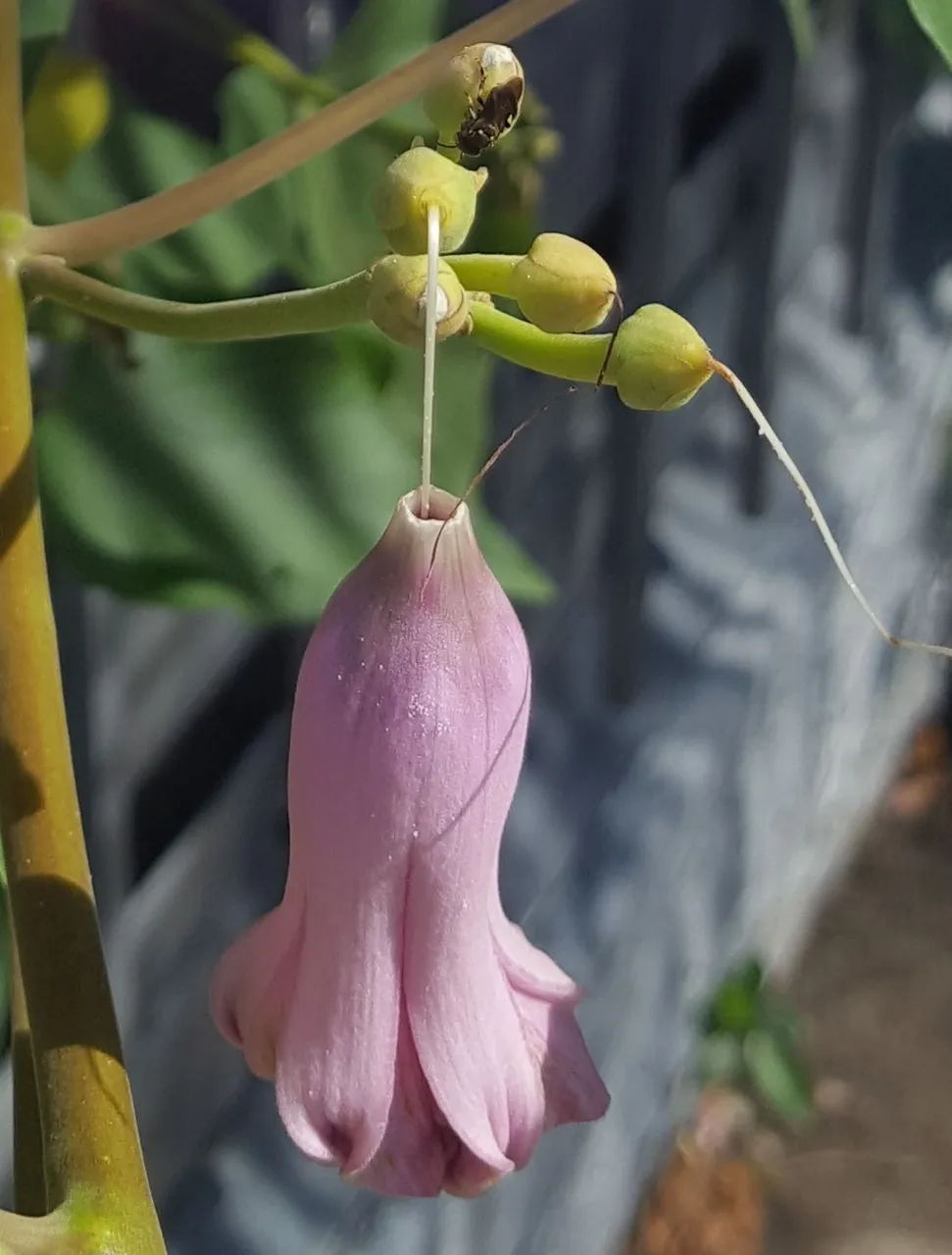
En otros casos es beneficiosa solo para uno de los dos como por ejemplo los insectos que se alimentan de las plantas o las plantas que se alimentan de insectos... el ejemplo más típíco es el de las plantas carnívoras.En las hojas se pueden encontrar otro tipo de interacción con insectos o ácaros y son las agallas, como las que observé en las hojas de esta planta de flores moradas. En este caso, el insecto o ácaro induce cambios morfologicos y fisiológicos en el tejido de la hoja con la finalidada de alimentarse y de protegerse contra enemigos naturales y del medio ambiente y se observan en forma de protuberancias donde se encuentra en su interior el insecto.
AIn other cases it is beneficial only for one of the two, such as insects that feed on plants or plants that feed on insects... the most typical example is that of carnivorous plants. Another type of interaction with insects or mites can be found on the leaves and these are galls, such as the ones I observed on the leaves of this purple flowering plant. In this case, the insect or mite induces morphological and physiological changes in the leaf tissue in order to feed and protect itself against natural enemies and the environment and are observed in the form of protuberances where the insect is inside.
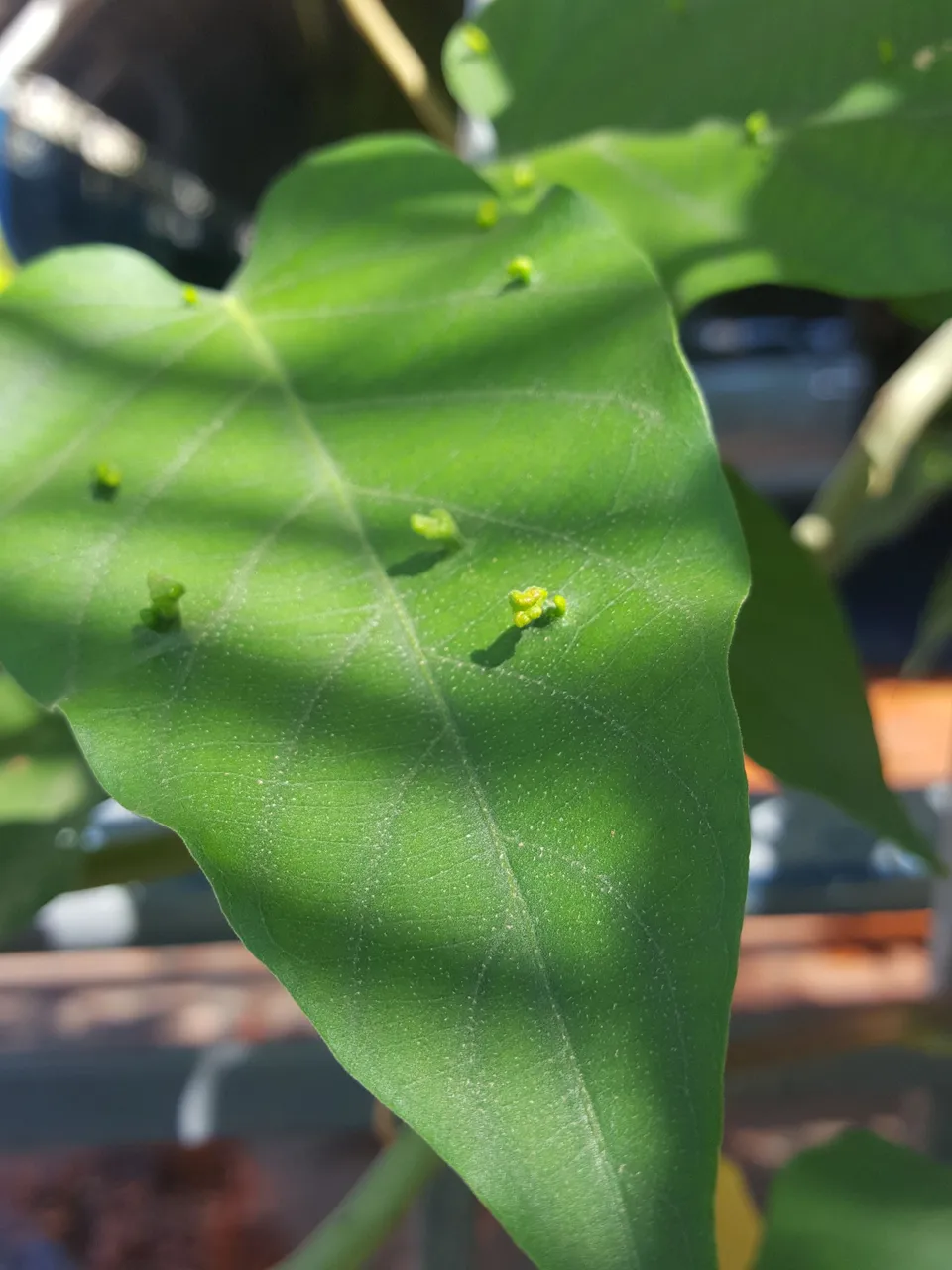
Esta planta de flores moradas acampanadas, es de la familia Convovulacea. Sus flores en forma de tubo con los pétalos sobrepuestos, es una de sus características. El género es Ipomoea el mismo de la batata o camote, cuya raíz es comestible. Existe en la naturaleza diferentes especies de este géneto que se diferencian por el color de las flores y la forma de las hojas. Sus tallos son trepadores.
This plant with bell-shaped purple flowers belongs to the Convovulacea family. Its tube-shaped flowers with overlapping petals, is one of its characteristics. The genus is Ipomoea, the same as the sweet potato, whose root is edible. In nature there are different species of this genus that differ in the color of the flowers and the shape of the leaves. Its stems are climbing.
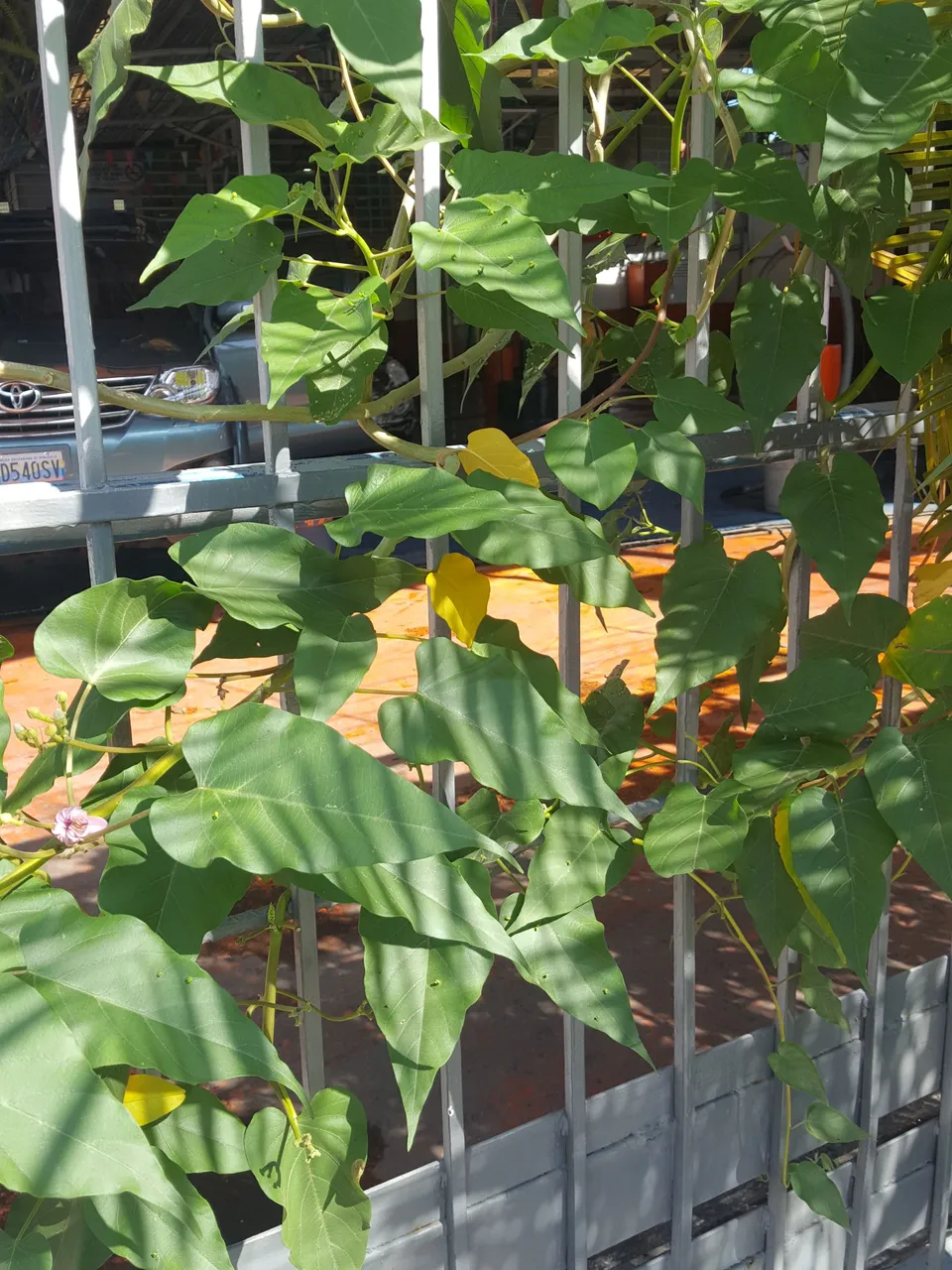
Esta planta está creciendo en un área de jardín, junto con otras planta. Nadie la sembró allí, no son cultivadas sino silvestres
This plant is growing in a garden area, along with other plants. No one planted it there, they are not cultivated but wild.
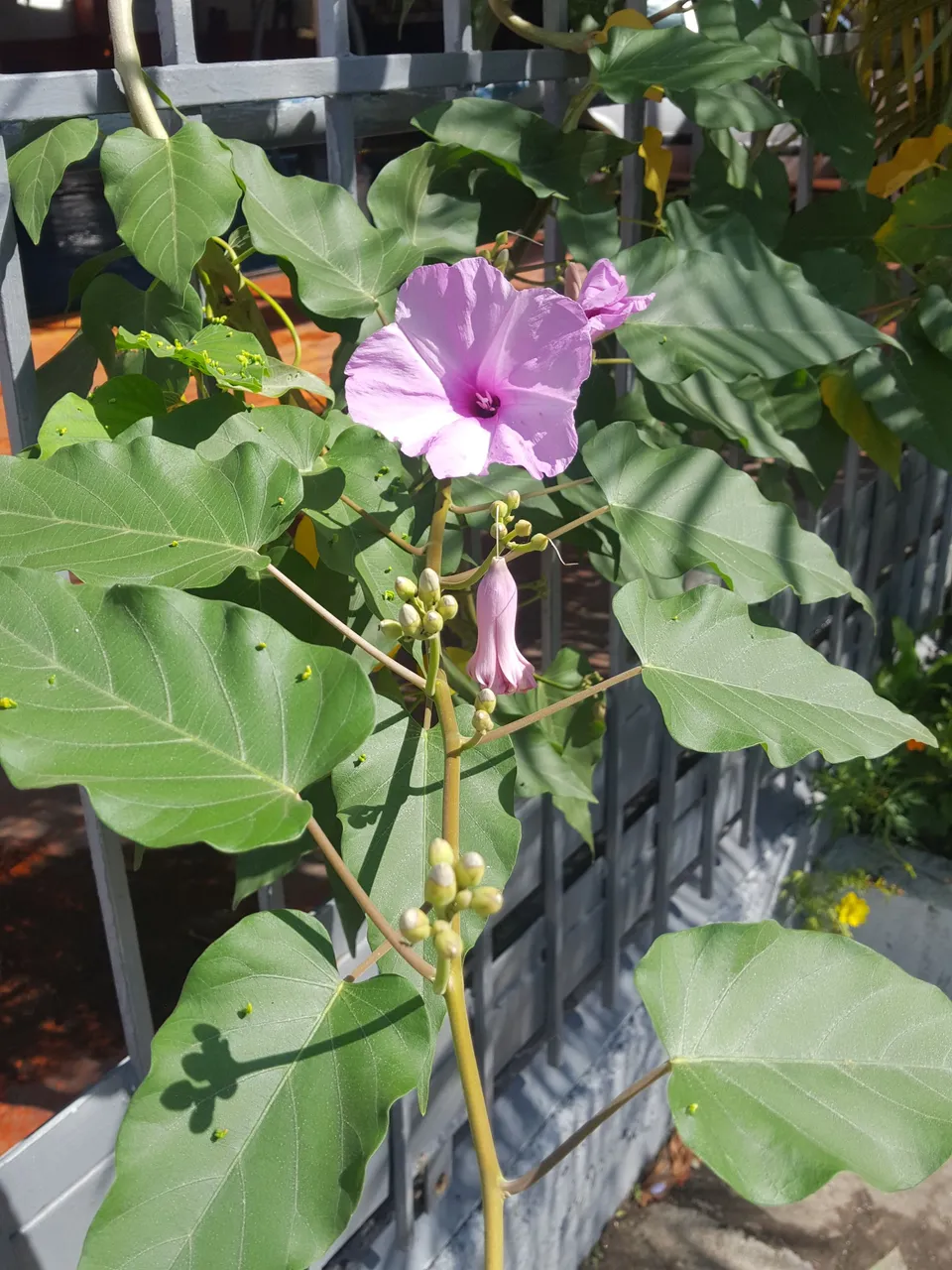
Al tomar las fotografías de las flores observe una abeja melipona alimentándose de la flor a la cual ya se le ha desprendido la corola. Si la flor ha sido polinizada y fecundada puede formarse un fruto y las semillas para continuar su ciclo de vida.
When taking pictures of the flowers observe a melipona bee feeding on the flower whose corolla has already detached. If the flower has been pollinated and fertilized, a fruit and seeds may form and continue its life cycle.
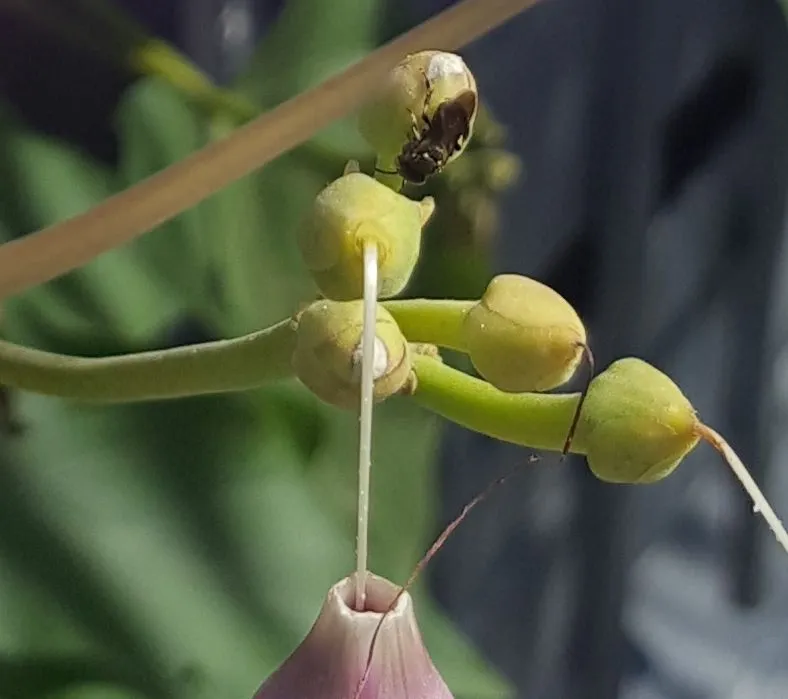
Muchas gracias por leer sobre este ejemplo de la naturaleza asombrosa donde las interelaciones son muy importantes para la vida
Thank you very much for reading about this example of amazing nature where interrelationships are very important for life.


Bibliografía consultada
José Luis Nieves-Aldrey. Insectos que inducen la formación de agallas en las plantas: una fascinante interacción ecológica y evolutiva. Boletín SEA, 23(1998): 3-12. http://entomologia.rediris.es/aracnet/8/agallas/
Las fotografías las tomé con un teléfono Sansung S6 edge.
